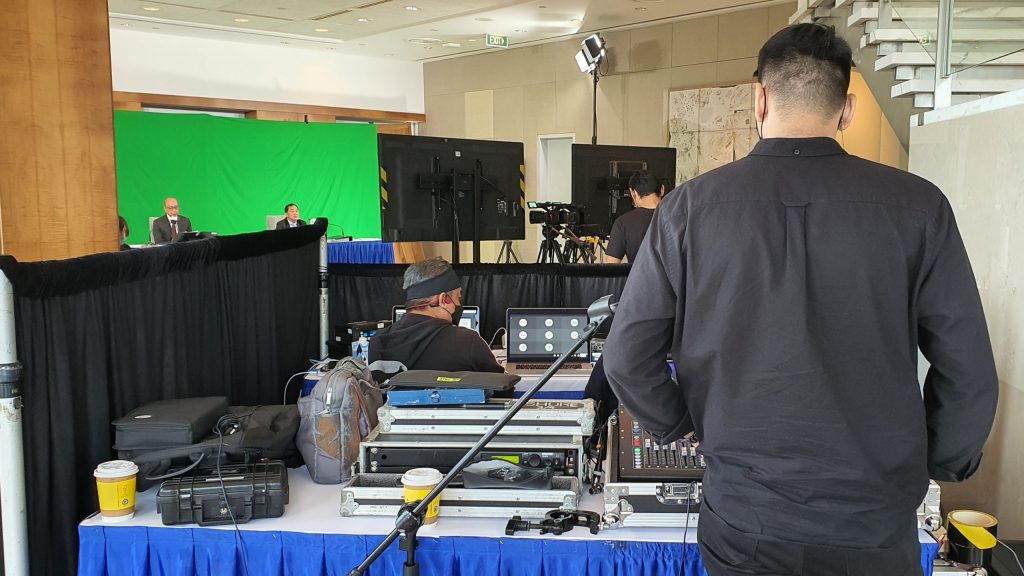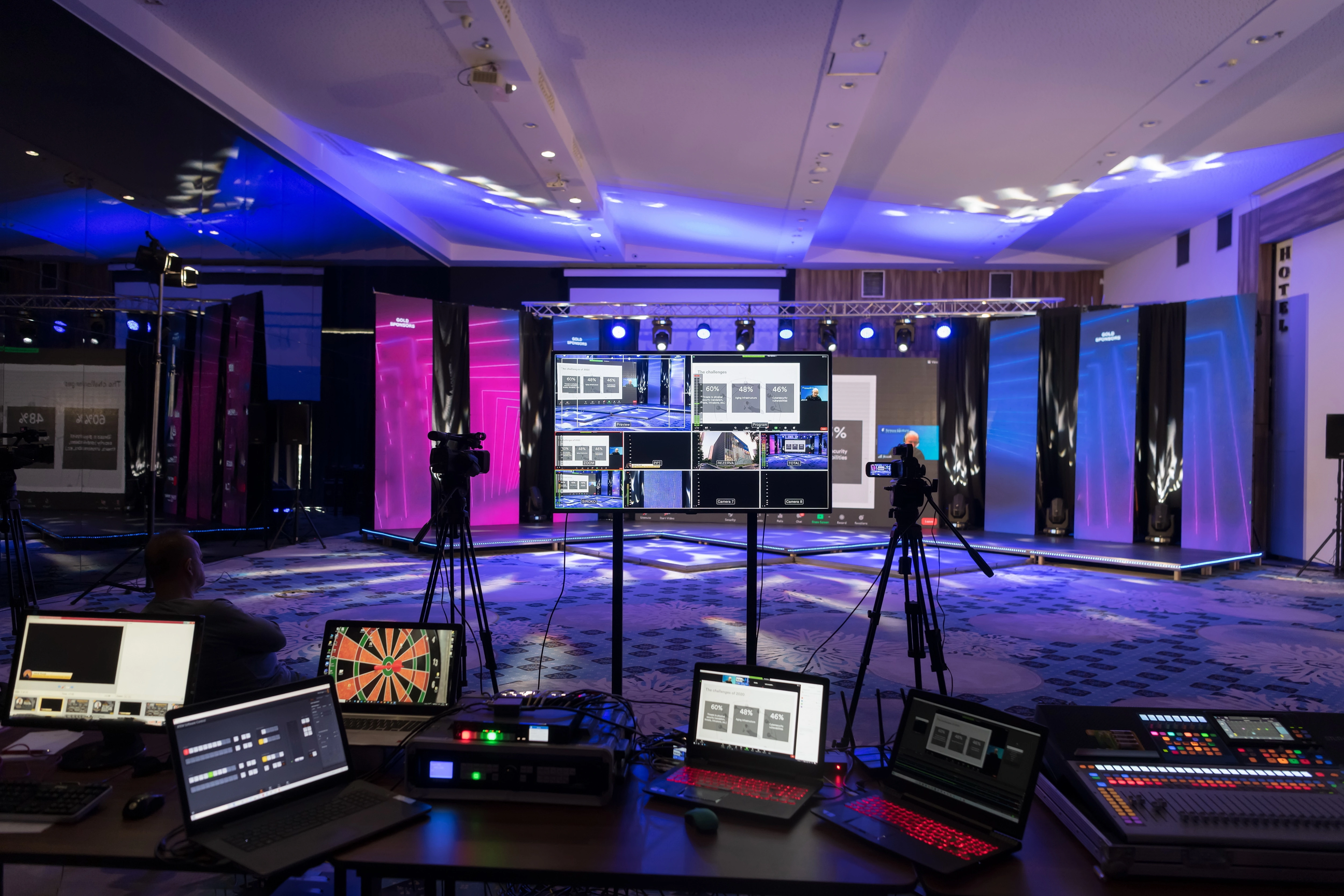Comprehending the Process of Live Event Audio Visual Production
The ins and outs of online event sound aesthetic manufacturing need a mix of technological know-how and calculated planning. Each stage, from the preliminary concept to the final implementation, needs a collaborative initiative amongst numerous specialists, including audio designers and lights developers. Comprehending the duties and responsibilities within this environment is critical for attaining a seamless experience. As we explore the important parts that add to a successful event, it becomes apparent that the structure lies in both preparation and flexibility. What takes place when unexpected challenges occur, and just how do they improve the manufacturing landscape?
The Significance of Planning
Efficient preparation is crucial for the success of any kind of real-time occasion sound aesthetic production. A well-structured plan functions as the structure, guiding every aspect of the event from conception to implementation. This process starts with defining the event's purposes, comprehending the target audience, and figuring out the preferred outcomes. Developing clear goals makes sure that all employee are aligned and can work towards a common function.
Additionally, careful scheduling is critical. A thorough timeline that includes target dates for every phase of manufacturing aids to alleviate potential risks and ensures that all components are addressed in a timely way. Moreover, reliable resource allowance is extremely important; this includes not just the personnels but likewise the spending plan, venue, and products needed for the occasion.
Eventually, comprehensive preparation not just boosts the quality of the audio visual experience however likewise infuses confidence among the team and stakeholders, leading to a successful and seamless occasion. Without this structure, also the most cutting-edge concepts can fail, emphasizing the undeniable significance of planning in live event audio visual manufacturing.

Trick Equipment and Modern Technology
A successful real-time event sound aesthetic manufacturing counts greatly on the appropriate tools and modern technology to bring the vision to life. Crucial parts consist of audio systems, aesthetic screens, illumination, and control systems, each playing an essential role in guaranteeing a smooth experience.
High-quality microphones capture instruments and vocals properly, while mixers permit for real-time sound changes based on the event's characteristics. Visual display screens, consisting of projectors and LED displays, are important for conveying info and improving target market involvement.
Lights equipment is one more important element, as it establishes the mood and highlights vital moments during the occasion. Alternatives vary from stage lights to intelligent lights systems that can be configured for particular results. Control systems incorporate audio, visual, and lights components, making sure natural procedure throughout the production.
Buying trustworthy tools and recognizing the latest technological innovations can considerably enhance the quality and impact of live occasion sound aesthetic productions, ultimately contributing to a remarkable target market experience. Live Event Audio Visual Production.
Duties and Obligations
Successful online event sound visual manufacturing requires a distinct structure of duties and obligations among team participants. Each role is critical to ensure smooth procedures and accomplish the preferred outcome.
The sound designer is accountable for handling audio high quality, including microphone positioning, audio mixing, and ensuring that all this contact form audio components are integrated with visual web content. The lights designer creates an ambiance that improves the event's mood, selecting suitable fixtures and shows lights signs to enhance the performance or discussion.
A video clip service technician supervises all visual components, consisting of camera procedure, video clip changing, and forecast monitoring. They work carefully with the supervisor, who collaborates the total production, making real-time choices to ensure that the occasion moves effortlessly.
Furthermore, a phase supervisor is vital for orchestrating on-site logistics, making sure that all staff member are educated of cues and timing. Manufacturers handle budgeting and scheduling, making certain that all elements of the occasion line up with the client's vision. Technical support team give critical help in fixing any tools problems that may occur. This joint framework allows an effective audio aesthetic manufacturing, aligning each member's know-how in the direction of a linked objective.
Implementation and Live Production
Implementing a live occasion calls for careful planning and real-time flexibility to make certain all components collaborated perfectly. The implementation stage is where the foundation laid during pre-production is placed into activity. Key to this procedure is the sychronisation of numerous technical groups, including sound designers, lighting service technicians, and video production crews. Each group needs to be lined up with the event's vision while keeping clear interaction to deal with any type of unexpected difficulties that arise throughout the occasion.

The production team must continue to be attentive, adjusting to target market responses and comments. Inevitably, effective implementation culminates in a cohesive online event that mesmerizes the audience and fulfills the customer's purposes.
Post-Event Evaluation and Responses
Adhering to the final thought of an online event, performing a comprehensive post-event analysis is necessary for determining toughness and areas for improvement. This evaluation procedure must pop over to this site include event responses from different stakeholders, consisting of guests, event staff, and clients (Live Event Audio Visual Production). By using studies, meetings, and informal conversations, coordinators can obtain important insights into the general experience and performance of the audiovisual manufacturing
Examining technical elements such as audio top quality, aesthetic clearness, and equipment dependability is critical. Additionally, examining the control between the production team and other divisions aids to determine logistical challenges and successes. Identifying any type of problems run into throughout the event enables groups to develop methods for alleviating similar issues in future manufacturings.
In addition, assessing and compiling responses helps with the acknowledgment of standout elements, such as appealing discussions or smooth changes, which can be highlighted in future events. The post-event examination not just provides a roadmap for enhancement but likewise cultivates a society of constant knowing within the team. Eventually, this reflective technique boosts the top quality of future real-time occasions, ensuring that they go beyond or meet audience expectations and deliver a remarkable experience.
Verdict
To conclude, effective live event audio visual production requires detailed preparation, competent control amongst varied roles, and the integration of sophisticated innovation. Each part, from tools choice to team collaboration, plays a crucial duty in providing a successful occasion. Involving in post-event examinations enables continual enhancement, ensuring that future productions profit from insights obtained. Eventually, a well-executed audio aesthetic strategy dramatically improves audience engagement and adds to the overall success of online occasions.
The ins and outs of online event sound aesthetic manufacturing need a blend of technological competence and tactical planning.Effective preparation is essential for the success of any type of live event audio visual manufacturing. Without this foundation, even the most cutting-edge ideas can falter, emphasizing the obvious significance of planning in live event audio visual production.
Each team must be aligned with the event's vision while maintaining clear interaction to address any unanticipated obstacles that arise during the event.
In final thought, efficient real-time event audio visual production requires detailed preparation, proficient coordination among varied roles, and the integration of innovative modern technology.